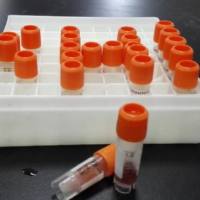FISH Analysis of Human Pluripotent Stem Cells
互联网
644
Human pluripotent stem cells (PSCs) hold promise for treating a multitude of diseases. These fascinating cells are unique in their ability to both self-renew and differentiate into cells from all three germ layers. However, PSCs, as well as other cultured cells, are prone to genetic instability. Given the possibility that these cells may one day be used clinically, identifying, and perhaps preventing, genetic instability is of particular concern for human PSC researchers. One type of genetic alteration that has been observed in PSCs is aneuploidy. Aneuploidy is defined as any divergence from the normal diploid number of chromosomes. So for human cells, any cell with more or less than 46 chromosomes would be considered aneuploid. Interestingly, there is a tendency for human PSCs, regardless of culture conditions, to gain specific chromosomes. In particular, gains of chromosomes 12, 17, 1, and X have been reported from labs all over the world. Since gains of these specific chromosomes are by far the most common aneuploidy seen in human PSCs, it is relatively easy and inexpensive to screen for these using fluorescent in situ hybridization (FISH). Here we will describe a cytogenetic method for screening human PSCs using FISH.









